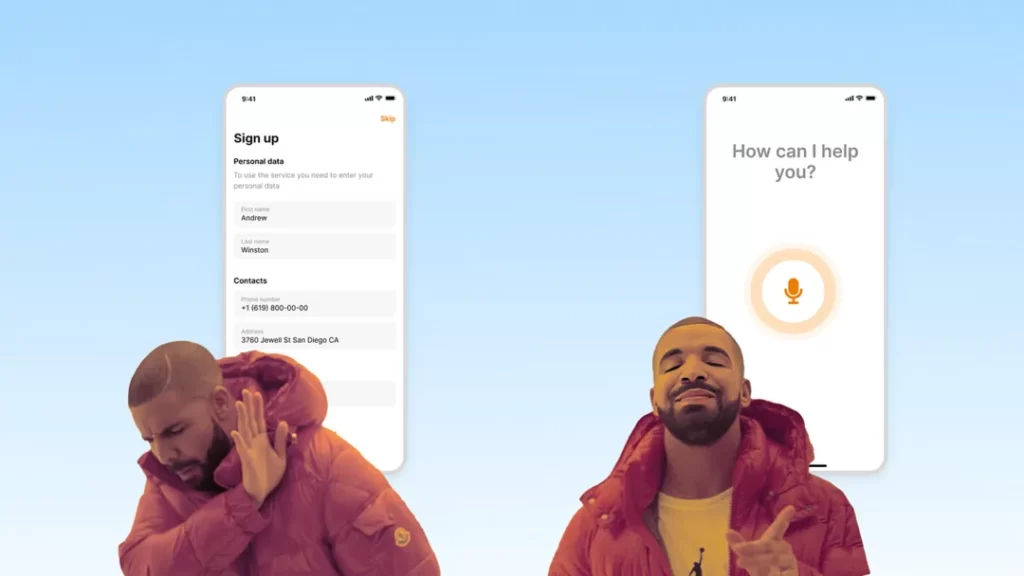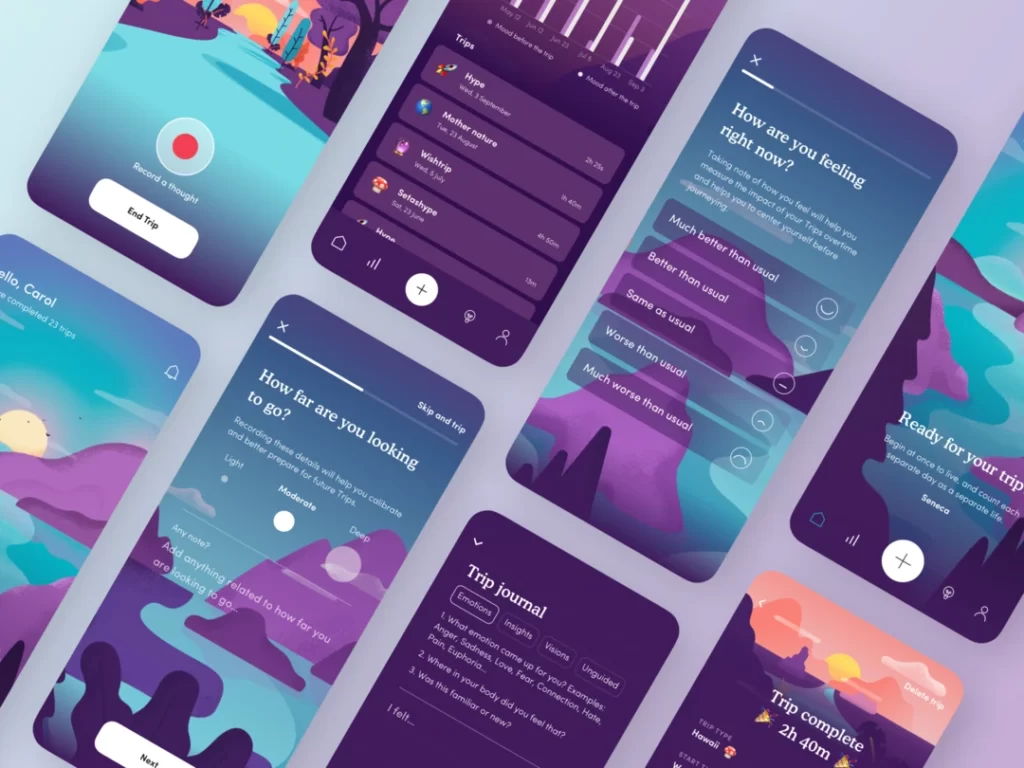Optimising Product Design: Creating Products People Love
Product design is an art and a science. It requires creative vision and analytical precision to craft digital experiences that truly resonate with users and deliver real value. In today's crowded marketplace, optimising your product design process is no longer optional – it's imperative.
Brands that fail to optimise often build products that users don't understand, can't easily use or don't care about. The result? Low engagement, poor retention, and products that fail to achieve product-market fit. By optimising the design process, you can avoid these pitfalls and create products that users love.
In this guide, we'll explore practical strategies and techniques for optimising the product design process at every stage – from initial ideation to final execution. Let's dive in and learn how to craft exceptional product experiences that convert and delight users.
Table of Contents
Understanding Your Users

The first step in optimising product design is understanding who you're designing for. Put yourself in your users' shoes. What problems do they face? What goals motivate them? How do they think about and interact with products like yours?
Conduct user research to uncover insights:
- Interviews: Have in-depth conversations to learn about needs and behaviours.
- Surveys: Get feedback from a broader audience.
- Personas: Create detailed profiles of key user types.
- Observations: Watch people use existing products.
- Focus groups: Facilitate discussions with select users.
Journey mapping can also shed light on the user experience. Document each touchpoint and moment of interaction. Identify pain points and opportunities to remove friction.
Defining the Product Vision
Next, define a compelling product vision based on your user insights. A strong vision includes:
- Purpose: How does this product improve people's lives?
- Differentiation: What makes this product unique compared to alternatives?
- Value: What tangible benefits does this product provide?
- Emotion: How does this product make users feel?
This vision focuses on the team and guides all design decisions. Revisit it often to ensure alignment.
Conceptualising Solutions
Brainstorm creative solutions that deliver on the product vision:
- Sketch: Get ideas flowing with rough pencil sketches.
- Prototype: Build simple digital or physical representations.
- Storyboard: Visualise fundamental interactions and transitions.
Constrain initial ideation by jumping ahead to finished designs. Diverge before you converge.
Prioritise concepts that are desirable, feasible, and viable. Evaluate through rapid prototyping and user testing.
Iterative Design

Product design is a process of constant refinement. Build, test, gather feedback, repeat.
Start with low-fidelity prototypes to confirm broader concepts. Then, add detail in higher-fidelity versions.
Small batches and rapid iteration accelerate learning. Be willing to throw away what isn't working.
Gather feedback early and often through usability studies. Identify areas for improvement.
By iterating rapidly, you home in on the optimal design over time.
Focusing on Customer Experience
Keep the broader customer experience in mind. How does this product fit into users' lives? What happens before, during, and after they interact with it?
Craft cohesive experiences across devices, platforms, and channels. Create intuitive paths through the product—guide users gently through flows.
Use microcopy and UI messaging to communicate clearly. Build delight into the details through animation, transitions, sounds, and vibrations.
Creating end-to-end experiences requires cross-functional collaboration. Work closely with marketing, support, operations, and other teams.
Optimising for Accessibility
Ensure your product is accessible to all. Follow standards like WCAG 2.1 to support those with disabilities.
Conduct audits to uncover areas that need improvement. Test with assistive devices. Get feedback from users with disabilities.
Simple changes make a big difference:
- Add image alt text
- Increase color contrast
- Support screen readers
- Allow keyboard navigation
- Accommodate motor limitations
Accessibility benefits everyone by promoting inclusive, flexible designs.
Driving Adoption Through Onboarding

A stellar product means nothing if people don't use it. Nail the onboarding experience.
Guide new users step-by-step. Explain key features and functions clearly. Set them up for that “aha!” moment.
Look for opportunities to onboard through active use. Avoid walls of text.
Craft motivational messaging. Communicate the value users gain. Share quick wins to build habits.
Onboarding is an ongoing process. Reengage those who fall off with reminders, tips, and new feature announcements.
Optimising Conversion Funnels
For products like SaaS apps, optimise the signup flow. Remove friction through each conversion funnel step:
- Awareness: Grab attention with compelling messaging.
- Interest: Share value prop and key differentiators.
- Consideration: Make choosing your product a no-brainer.
- Intent: Make signing up easy through clear CTAs.
- Purchase: Reduce fields, simplify language, and highlight benefits.
Test variations to funnel elements. Measure results. Double down on what works.
Driving Retention Through Delight
Getting customers is one thing. Keeping them is another. Wow them with unexpected delights:
- Surprise rewards: Random upgrades or free gifts.
- VIP treatment: Special access or support for power users.
- Relevant recommendations: Suggestions based on usage and preferences.
- Human touch: Handwritten notes or customer appreciation days.
Build habit-forming products. Trigger frequent use through notifications, reminders, and incentives.
Solicit feedback through surveys and reviews. Monitor churn metrics. Diagnose and resolve pain points.
Optimising Visual and Industrial Design

Craft intuitive, cohesive visual designs across interfaces and touchpoints. Develop a design system documenting core elements like colours, fonts, and UI patterns. Maintain consistency in layout, interactions, and composition.
For physical products, optimise industrial design. Ensure excellent ergonomics through material selection, form factor, weight distribution, and manufacturability—model and test for durability, safety, ecological impact, and other factors.
Work closely with design partners like visual designers, content strategists, researchers, and engineers.
Testing and Validation
Continuously test product designs to validate assumptions:
Usability testing: Observe users interacting with prototypes. Look for confusion and obstacles.
A/B testing: Try variations to design elements with a split audience. Measure performance.
Beta testing: Release an early version to select users. Gather feedback to guide refinement.
Analytics: Monitor usage data and metrics. Find bright and dark spots.
Let testing inform design decisions at every stage. But also listen to your intuition as a designer. Find the right balance.
Launching and Monitoring
Set your product up for success at launch by readying support resources and monitoring systems. Have a plan to capture feedback and issues early.
Post-launch, stay closely connected to the user experience. Monitor ratings, reviews, sentiment, and usage patterns. Look for opportunities to optimise.
Use in-product surveys and feedback channels to have direct conversations. Learn about delights and frustrations.
Be responsive. If users encounter issues, diagnose the problem and push fixes quickly.
Maintaining Momentum Over Time

Fantastic product design takes perseverance. Launching is just the beginning.
Stay aligned to your vision but adapt to learnings and changing user needs. Give users a voice in shaping that evolution.
Keep energising the product with fresh features and improvements—balance continuity with innovative thinking.
Revisit your processes and principles as the team and product grow. Hold onto what works while welcoming new ideas.
By staying relentlessly user-focused, you can build products that stand the test of time.
Key Takeaways for Optimising Product Design
Optimising product design is an ongoing process of understanding users, ideating solutions, prototyping concepts, gathering feedback, and refining designs. Key tips include:
- Deeply realise who you are designing for through user research.
- Define a compelling, user-centric vision to guide design.
- Conceptualise creative ideas through sketches, prototypes, and storyboards.
- Use an iterative approach to improve the design over time incrementally.
- Craft cohesive customer experiences across touchpoints.
- Design for accessibility from the start.
- Onboard users effectively and drive product adoption.
- Surprise and delight users to improve retention.
- Continuously test and validate design assumptions.
- Monitor usage and be responsive to user feedback post-launch.
- Maintain user focus and momentum over the long term.
Following an optimised design process, you can create products that genuinely resonate with users and make a difference in their lives.
Frequently Asked Questions About Optimising Product Design
Here are answers to some common questions about optimising product design:
How do you know when a product's design is “done”?
Product design is never indeed done. You have to continually monitor usage, gather feedback, and refine the design based on how people are actually interacting with it. Focus on iterative improvement over time rather than design finality.
What are some fundamental principles for intuitive product design?
Some core principles include learnability (how easily users understand the product), efficiency (how quickly users can complete tasks), memorability (how well users retain knowledge of the product over time), low error rates, and high satisfaction.
How might optimising product design differ for a physical product vs. an app?
Physical products require more focus on industrial design, ergonomics, manufacturing considerations, materials safety, and other factors unique to designing objects for the real world. Apps allow for more iterative changes but still require significant user testing.
How can you gain insight from product analytics?
Analytics provides a wealth of behavioural data on how users navigate products—Analyse metrics like acquisition, retention cohorts, feature usage, conversions, and funnel fallout rates. Dig into qualitative feedback as well.
How might product design change when scaling up a product?
As products grow, you may need to standardise and streamline certain design elements. But avoid homogenising the experience. Continue to nurture innovation and creativity as the team expands. Support designers through collaboration tools and clear guidelines.
Wrapping Up
Optimising product design is about connection. It's about crafting experiences that resonate on a human level that speaks to people's desires and dreams. Products that spread are not always the most advanced technologically – they are the ones that touch people emotionally and help them become who they aspire to be.
So don't get caught up in building features no one asked for. Stay focused on delighting the actual humans who will use your product. Empower your team to listen deeply and observe. Dig into what makes your audience tick. Design experiences that not only ease their pain points but bring them joy. Meet their needs in ways no one else has considered.
If you can achieve this fusion of logic and magic – analytical precision combined with emotional power – you can build products people fall in love with. Ones they eagerly share with friends because it improves their lives. That is the ultimate measure of an optimised, human-centred design process. With focus, passion and constant creativity, you can craft products that make people smile – and make the world slightly better. So get out there and connect.
